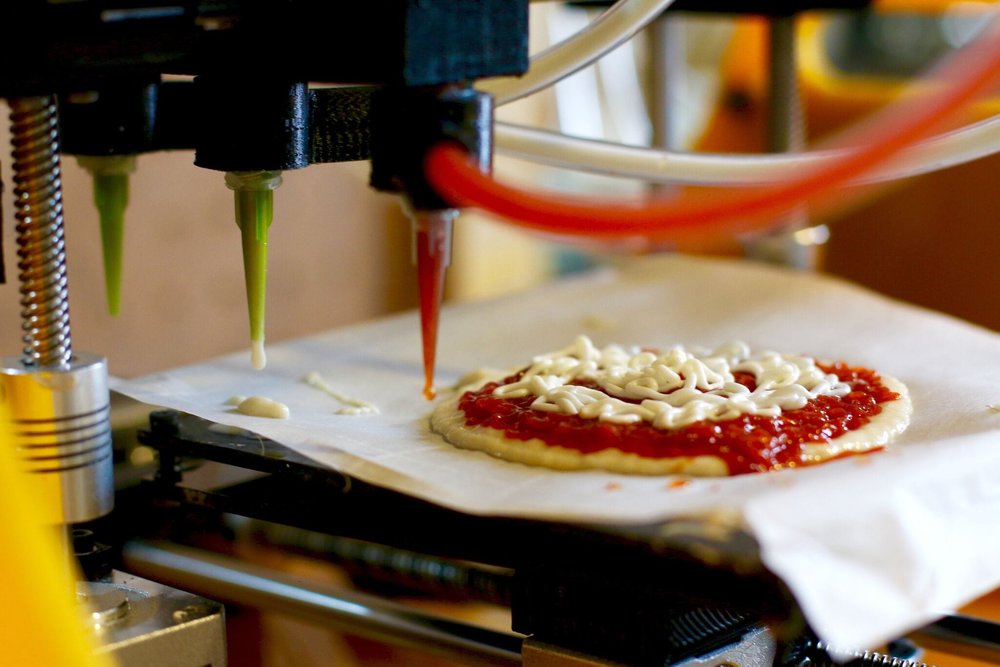Probably the answer is no (is it?), but there are some aspects to 3D food printing that will likely cause this technology to disrupt the food industry.
3D printing is already commonly used to create simple objects. For some nice examples, take a look at https://bit.ly/2qnfpij. However when it comes to 3D food printing, the technology faces some barriers. Printing chocolate or dough is probably not very complex, but some types of food will require a longer and complex process. The most common designs require successive layers of ingredient to cool, leading to long wait times (Straw, 2015). In addition achieving the right texture and flavour for e.g. meat is a lot harder. Moreover, people are very conservative when it comes to food and might not readily accept these “printed meals”.
Nevertheless the technology is very promising. Firstly, creativity is boosted. Think about beautiful shapes or even replicates of pictures that can be made. Secondly, food sustainability is addressed. Alternative but unpleasant ingredients (e.g. algae, duckweed, grass, mealworm) could be used. If these ingredients are mixed in the shape of a cookie, people might actually eat it. Moreover, it is claimed that it would reduce food waste. For example the cartridges could be made environmentally friendly. Thirdly, nutritional customizability is possible which provides solutions for healthy and personalized dieting by allowing users to choose the amounts of calcium, protein, omega-3, and carbohydrates in their meals.
CEO of byFlow, a Dutch company selling and producing 3D Food Printers, announced they want to investigate more into healthier capsules with less or no sugar and no preservatives and into fresh vegetables and fruits. As such, 3D printing could also reinforce a healthy lifestyle. Especially for families who find cooking too time-consuming.
Considering these drawbacks and benefits, what part of the food industry would face the biggest threat by this technology? Grocery shops, bakeries and patisseries, food catering (e.g. for nursing homes), high-end or average restaurants or maybe fast-food chains and budget-friendly food chains?
Sources:
https://disruptionhub.com/disrupted-food-why-3d-printed-food-is-the-future-of-food/


Great post, Aurélie. 3D-food printing can have many benefits. Considering the busy life we have nowadays, people often struggle to find a good work-life balance. Imagine that people could save time cooking meals every day! However, there are some disadvantages to 3D-food printing as well which make me highly doubt the implementation of this development in every day life. First, it is still very expensive and remains unaffordable for most households today and in the near future. Second, 3D-food printers are still limited in what they can actually do. Combining the high capital investment with the limited food options, I believe 3D-food printing will be unattractive for the market. A better approach would be if manufacturers could develop a service that could complement the traditional food industry, instead of trying to replace it.
Source: https://3dinsider.com/3d-printing-disadvantages/